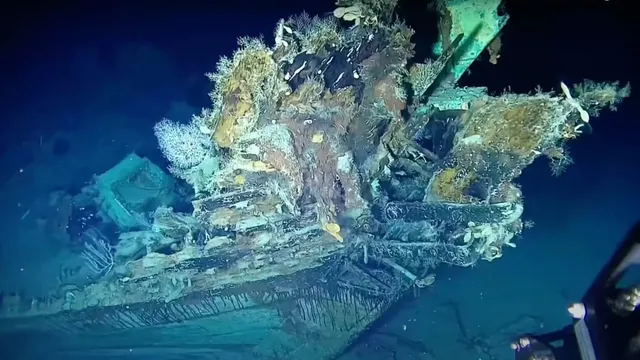
Treasure photos reveal the location of the world’s richest shipwreck
2025-06-11 21:40- A Spanish galleon sank in the Caribbean over 300 years ago while carrying significant treasure.
- Images recently found provide strong evidence of the galleon's location, reigniting interest in the wreck.
- Various parties, including Colombia and Spain, are claiming ownership of this historical treasure.
Express your sentiment!
Insights
The Spanish galleon San José sank in the Caribbean over 300 years ago while carrying an estimated $20 billion in treasure from Peru. Recent developments indicate that improvements have been made in locating the wreck, with images of coins serving as definitive evidence of its existence. This shipwreck is believed to be the richest in history, garnering significant interest from various stakeholders. Currently, Colombia asserts its ownership of the wreck, while competing claims arise from Spain, American searchers, and indigenous groups, each vying for a stake in the valuable treasure, which hinges on maritime laws and historical context. The location of the galleon and its treasures has been a topic of discussion for years, with recent technological advancements in underwater exploration likely playing a pivotal role in these developments. This situation underlines the ongoing debate regarding ownership rights and historical restitution claims in maritime archaeology, raising questions on who can rightfully claim the treasures of the past.
Contexts
The San José treasure, a remarkable historical artifact, is rooted in the tragic sinking of the Spanish galleon San José in 1708 off the coast of Colombia. This ship was part of a fleet transporting immense wealth from the Americas to Spain, laden with gold, silver, and precious gemstones, the result of colonial exploitation and trade. The San José was considered one of the most opulent vessels of its time, carrying an estimated value of over 17 billion dollars in today’s currency. The ship met its demise during a naval engagement with British ships, leading to its sinking and the dispersal of its treasure into the depths of the Caribbean Sea. The loss of the San José not only represented a financial blow to Spanish colonial powers but also marked a significant event in maritime history, illustrating the perils of treasure trading during the age of exploration and colonization. The hunt for the San José treasure has captivated treasure hunters, historians, and archaeologists alike for centuries. Countless expeditions have searched for the galleon and its hoard, fueled by tales of its unimaginable riches. However, the enduring allure of this treasure has been accompanied by complexities surrounding ownership, legality, and preservation efforts. In recent years, technological advancements have led to more successful searches, culminating in the discovery of the shipwreck in 2015, further igniting interest in the treasure's historical significance. The find was monumental, as it not only confirmed the ship’s location but also sparked international debates about salvage rights and the ethical implications of recovering treasures from sunken ships. The Colombian government asserted its rights over the wreck, citing national and cultural heritage, while private companies and treasure hunters claimed interests based on salvage contracts. The discovery of the San José has unveiled a wealth of information about both the ship itself and the broader historical context in which it operated. Artifacts recovered from the wreck have provided insights into 18th-century maritime technology, trade routes, and the economic dynamics of colonial empires. Furthermore, the cargo includes items such as coins, ingots, and jewelry that reflect the history of the Spanish Empire and its exploitation of natural resources in South America. The San José treasure also serves as a reminder of the cultural and human stories behind these riches, as indigenous peoples and enslaved Africans were integral to the production and transport of these valuable goods. The narrative of the San José transcends mere monetary value, illustrating the complex interplay between culture, history, and identity. The ongoing exploration and study of the San José treasure continue to generate scholarly interest and public fascination. Institutions and researchers worldwide are collaborating to study the artifacts and apply conservation techniques to preserve them for future generations. As debates regarding ownership and ethical recovery practices persist, the legacy of the San José galleon reminds us of the many stories encapsulated within its hull and the lessons learned from history's treasures lost to the sea. Moving forward, it is essential to balance the excitement of discovery with the need for respect towards the cultural significance of the finds and the rights of nations involved in their histories.